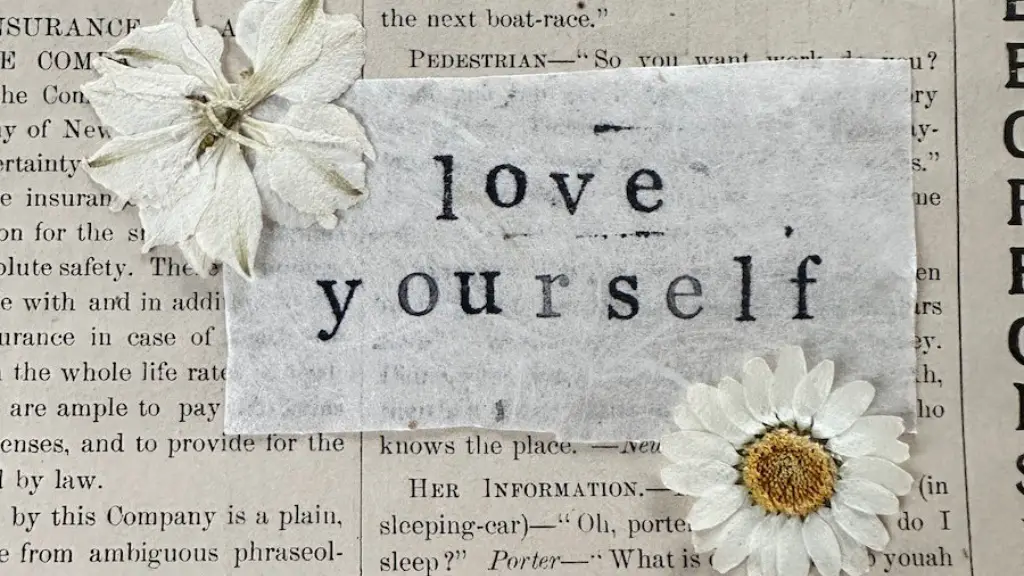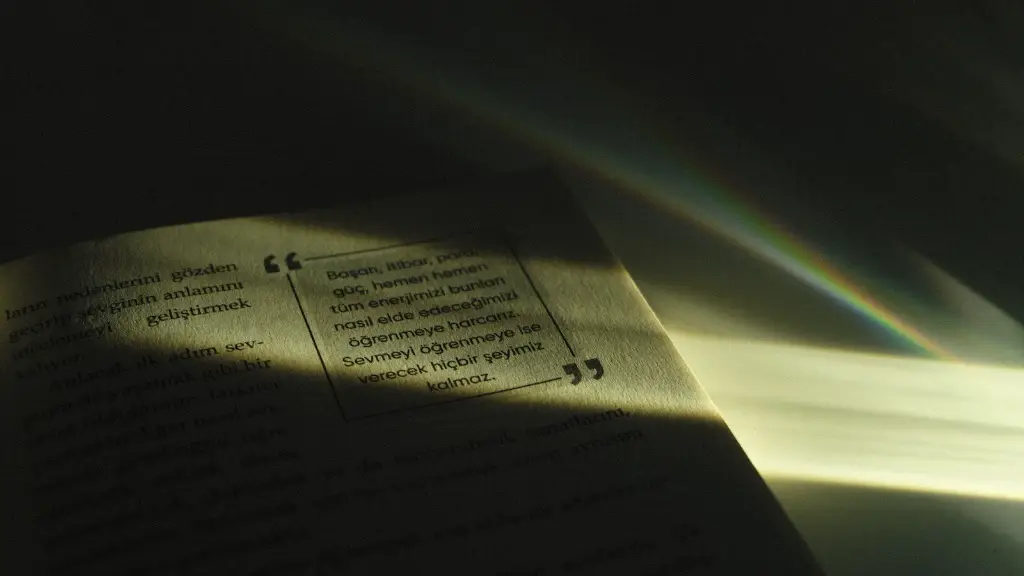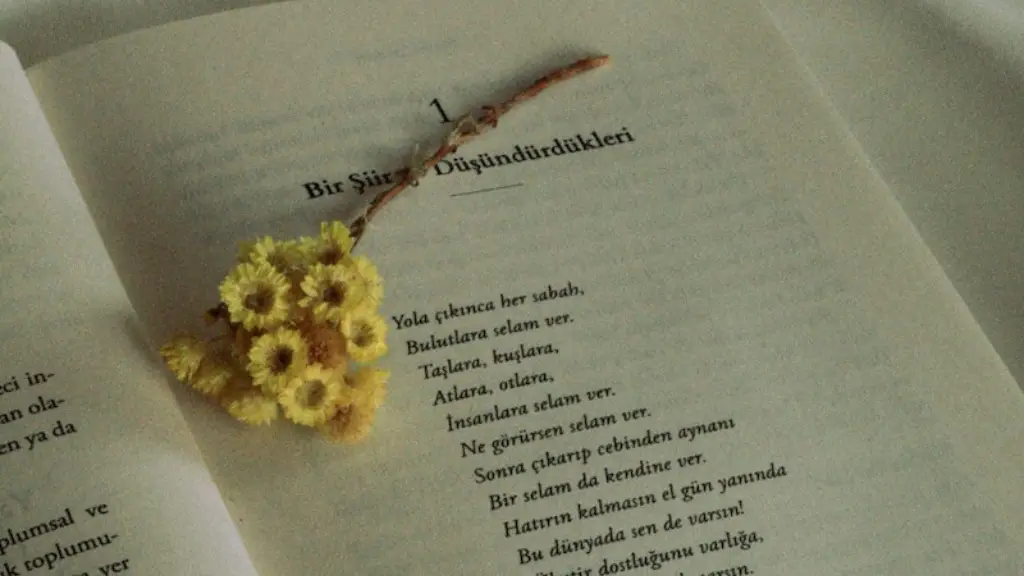Introduction
Poetry has been an integral part of literary creation since antiquity, with the very first writings we have of literature composed in the form of poems. It is an established and overarching way of composition whose greatest practitioners have created some of the greatest masterpieces in literature. While it is difficult to count the exact number of distinct types of poetry, it is clear that there are at least fifty different types of poems. These poems range from classical, to contemporary, to abstract, and cover a wealth of topics, form, and style.
Traditional Types of Poetry
Many traditional types of poetry can trace their origin to the prior ages of classical literature. Types such as the epic, the ode, the sonnet, and the elegy are some of the most prominent and popular types of poems. They contain a variety of themes ranging from heroic tales, to the tributes of love, to the mourning of death. The structure of these classical poems is typically standardized and set by tradition, and often employ the use of words and meters, as well as a specific rhyme scheme.
Modern Types of Poetry
In the modern era, poetry has been undergoing a renaissance, as evidenced by surging literary sales and the soaring popularity of groups and websites like slam poetry and NaPoWriMo. A major aspect of this new wave of poetry is the breaking of the traditional constraints of form to create new and modern types of poetry. Writers are now taking advantage of the vast resources of the internet and social media to expand form, content and bring their works into the modern world.
Types of Poetry in Modern Culture
Incorporating the use of emerging technologies, visual arts, and non-verbal communication, modern culture has spawned many new and innovative types of poetry. Museums offer various types of interactive and immersive experiences, integrating poetry into their programs. Additionally, online poetry-producing platforms allow for writers to interact with other writers and create community around poetry. The product of this modern era of poetry affords us the opportunity to look at its form fresh and innovate for the future generation.
Abstract Poetry
Abstract poetry is a genre where meaning, if it’s present at all, is often difficult to percept. It requires an appreciation of meaning, form and interpretation and is often associated with the individual creating the work due to its abstract nature. Participating in activities such as playing with sounds, or image play, or simply exploring alternative ways of creating an individual’s creative process can form the basis of an abstract poem.
Performance Poetry
Performance poetry is a type of poetry where the work is composed, performed, and usually heard or witnessed first-hand. An integral part of this form of expression is the communal gathering to witness or share in the reading, especially in a live setting. Anywhere from a small number of respected individuals to a large audience is all possible. This allows for the readers, performers, and attendees all to be expressed and feel a part of the concept and togetherness of the performance.
Sound Poetry
Unlike other forms of poetry, sound poetry does not necessarily employ the use of words and sentences, but rather plays with the sounds of the language by invoking pronunciation, syllables, repetition of concepts, and other literary and poetic devices. This creates a ‘music’ of the words, so that a song composed of words can be a sort of sound poem. This type of poetry also relies heavily on the performer and the viewer, or listener, to gain a full understanding or appreciation of the work.
Visual Poetry
Visual poetry is a type of poetry where the main aspect of the composition is based on visual forms and layouts. The visual elements of a poem often take precedence over the actual words or their literal meanings. For example, a visual poem may have the words arranged in an abstract pattern or an invented shape. The visual element can be further expanded with the use of color, painting, collage, light, and other visual communication media.
Lyric Poetry
Lyric poetry is a type of poetry that can often be found in music or in the form of a ballad. This type of poetry explores and expresses intense emotions, reflection, and contemplation, often using the structure of a story. It can take the form of a simple poem or sung lyrics. Though it does not always need to necessarily be a story, it often has poetry as its core to evoke and maintain the feeling and meaning of the poem.
Narrative Poetry
Narrative poetry is another type of poetry that is often composed in story form. Its purpose is often to either tell or retell a story, either as a poem or ballad. Narrative poetry can be found throughout history, with some great examples of its use in Beowulf and La Chanson de Roland. It can take the form of either a single-stanza poem or a long poem with multiple sections.
Haiku Poetry
Haiku is a traditional form of Japanese-style poetry that consists of three lines. The poem itself consists of five syllables in the first line, seven syllables in the second line, and five syllables in the third line. The structure is both challenging and highly rewarding, as the writer has a great deal of creative freedom within the lines. The reason for its popularity is due to the often concise nature of the form, allowing the writer to capture a moment in time in a beautiful and succinct form.
Limerick Poetry
Limericks are a type of humor-based poetry that originated in Ireland. Typically composed of a quatrain of five lines, limericks often contain humorous and often nonsensical content. They often make use of archaic phrasing and colloquial terms in order to evoke a sense of humor. Though lighthearted in nature, limericks can be quite witty, entertaining, and even thought-provoking.
Tanka Poetry
Tanka is a traditional form of poetry from Japan with a unique structure. Tanka is composed of five lines, with each line consisting of a specific number of syllables. There is a specific pattern of syllable length for each line, that when composed correctly can be both satisfied and pleasing. Tanka often deals with themes such as nature, emotions, and relationships.
Free Verse Poetry
The most expressive type of poetry is free verse. Free verse poetry is composed without any form of inherent structure or meter. This is what offers it a great deal of variety in terms of content and style. Free verse poetry often contains a great deal of emotion and feeling as poems composed in this form can express the feelings and thoughts of the poet in a very free form.
Concrete Poetry
Also known as shape poetry, this type of poem creates a picture with the words, making use of typography, symbols, letters, and other visual elements. Concrete poetry attempts to create a visual representation of the words and the concept of the poem. This type of poetry makes use of visual elements to add more dynamics and layers to the poem. The concept of concrete poetry can be traced back to ancient times, though its modern form is only a few hundred years old.



